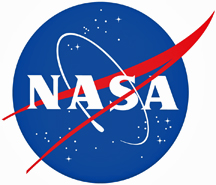[SatNews] NASA's Space Launch System (SLS) Program kicked off its critical design review on May 11th at NASA's Marshall Space Flight Center in Huntsville, Alabama.

Artist concept of NASA's Space Launch System wireframe design. The SLS Program is kicking off its critical design review May 11 at NASA's Marshall Space Flight Center in Huntsville, Alabama.
Image courtesy of NASA.
This new rocket will be the most powerful launch vehicle ever built and is designed to be sustainable and evolve to carry crew and cargo on deep space missions, including an asteroid and ultimately to Mars. Milestone reviews like the critical design review are just that—critical. The critical design review demonstrates that the SLS design meets all system requirements with acceptable risk, and accomplishes that within cost and schedule constraints. It also proves that the rocket should continue with full-scale production, assembly, integration, and testing and that the program is ready to begin the next major review covering design certification.
Each element for the rocket, including boosters, engines, stages and Spacecraft and Payload Integration & Evolution (SPIE) -- undergo their own reviews before this week’s kickoff of the integrated program review. Boosters, stages and engines have passed their critical design reviews, and the SPIE Office is in the process of completing its critical design review. SPIE is responsible for the design and development of several parts of the top of the rocket, including:
- Orion stage adapter—connects the Orion spacecraft to the SLS
- Interim cryogenic propulsion stage—gives the Orion spacecraft the big push needed to fly beyond the moon before the spacecraft returns to Earth during the first flight test of SLS
- Launch vehicle stage adapter—used to connect the core stage and interim cryogenic propulsion stages
SPIE also works to prepare for the future evolution of SLS to provide the capabilities needed for human missions to Mars. The office oversees in-house research and partners with academia, industry and other government agencies to develop new technologies and systems that will benefit not only SLS, but also the larger U.S. launch industry.
The SLS Program critical design review is targeted to conclude in late July.
"We've never said building a rocket is easy," said SLS Program Manager Todd May. "We pore over every part of this rocket during these reviews. Thousands of documents and months of time are put into making sure the design is sound, safe and sustainable, and will make NASA's mission of furthering human spaceflight possible. We are making advances every day on this vehicle."
The first flight test of the SLS will be configured for a 70-metric-ton (77-ton) lift capacity and carry an uncrewed Orion spacecraft beyond low-Earth orbit to test the performance of the integrated system. As the SLS evolves, it will be the most powerful rocket ever built and provide an unprecedented lift capability of 130 metric tons (143 tons) to enable missions even farther into our solar system.


